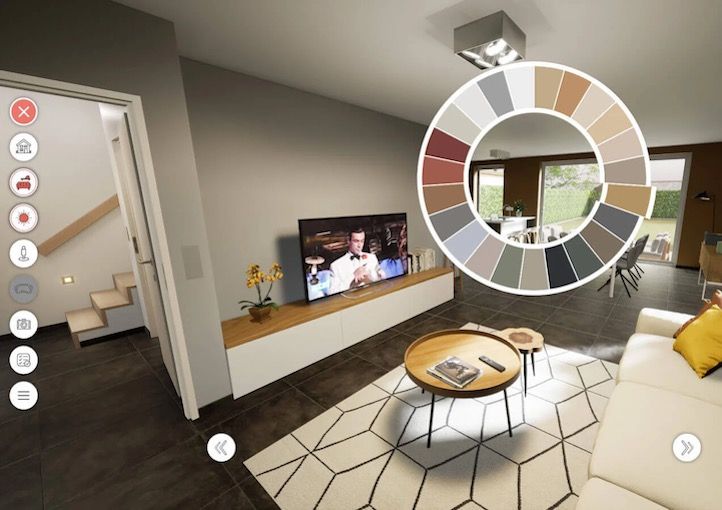How to Design and Deploy a 3D Configurator That Will Wow Customers

Creating interactive customer experiences and streaming them to any device is more accessible than ever before. Game engines and other 3D rendering software create seemingly endless possibilities for brands to sell complicated or customizable products online without customers ever stepping into a physical store or showroom.
But just because this is possible, that doesn't mean it's easy.
Various processes have to work together seamlessly in order to deliver a truly interactive and consistently reliable 3D experience online. It takes expertise that most companies don’t have in-house.
Even before you get to the streaming portion, creating the computer-aided design models that will wow customers takes more than opening up Rhino or AutoCAD. The best 3D product configurators have to make customers feel like they could reach through the screen, touch and feel the product like it’s right in front of them.
Creating something that photo-realistic used to be incredibly arduous, time-intensive work. But that’s changed thanks to leading game engines. Unity and Unreal Engine have streamlined the rendering process, making the work, if not easy, at least significantly more efficient.
If your company wants to create a real-time 3D experience online that's far more convenient for the end-user to engage with (and far more cost-efficient), you need to understand what has to go into it and how you can successfully deploy it.
Designing your perfect real-time 3D configurator
Gaming engines can take 3D models and turn them into ultra-realistic renderings that are so detailed that they could even be used in virtual and augmented reality scenarios.
The question for you shouldn’t be whether or not it’s possible, then, but what you should do with all that power. How do you harness cloud rendering and gaming to create a 3D configurator people actually want to use, and make it as accessible as possible regardless of location or device?
Use a game engine. Regardless of the industry you’re in, the best path to developing 3D content that changes in real time is through Unreal Engine’s or Unity’s gaming engines. Not only is this technology best suited to the task, but because of its widespread use, there are also a ton of online resources to guide you through the development process.
Plus, Unreal has created a visual scripting system for non-coders, allowing them to create programs without knowing any programming languages. There are also online resources that make creating and changing textures much more efficient.
Make the experience as photo-realistic as you can. When a customer changes a feature — whether it’s something big like counter-tops in a digital show home or something smaller like the exterior paint on a car — they can visualize and see exactly how that will affect the look of the product as a whole.
That doesn’t mean you should overload the customer with options. Even though you’re using game engines, this shouldn’t be thought of as a game, where customers need to collect every customization before they can go on to the next level. The key is finding the balance that makes your configurator customizable without making it overly complex.
Make it social. Once you’ve got your feature set down, the next step is making your configurator social. Create ways for users to share images of their custom product, creating word of mouth and getting your users excited to take the next step and click that buy button.
You can even give customers ways to live-stream the configuration process live, getting input from others as they go. This type of feature is especially useful for B2B customers that often require multiple sources of input before making a purchase. Consumer-oriented businesses, like real estate companies, could also get a lot of use out of this type of collaborative streaming and enabling live chat with an agent.
The best product configurators should allow users to easily customize their product without making it seem like work, regardless of the device they’re using. For a long time, this wasn’t really possible. But now, with Unreal and Unity plugins, this type of configurator can be available to more businesses than ever before.
While creating a 3D configurator might sound like plenty of work, the truth is that you’re just getting started. Getting it out to the masses is the real challenge.
Streaming your immersive 3D configurator
There are two key obstacles to successful streaming: speed and quality. You want the experience to be in real time without sacrificing the high fidelity and detailed photo-real design you worked so hard to create.
You also need to do this at scale, especially for large-scale e-commerce deployments or equipping your sales team in the field with readily available interactive 3D configurators. Considering how much GPU power 3D renderings require, it’s not something you can outsource to your users’ computers. It has to be done in the cloud.
This means more than just hiring a cloud service and plopping your configurator into it. You need the expert talent to turn the power of the cloud into the interactive and ultra-realistic product you want to deliver and to create the most reliable user experience possible, which scales to meet user demand at any time of day..
Specifically, you'll need:
· A cloud expert to configure and set-up your cloud solution of choice.
· Someone to coordinate and schedule connections for each streaming session, and manage your servers to make sure they handle traffic changes.
· A data security team.
· Someone who can teach the rest of your team how to use your application.
And this is just to get it up and running. To keep it going, you need people who can ensure your cloud usage is as efficient as possible and fix it if it’s underperforming.
This might seem like an overwhelming task — and it can be. Most companies that go down this path use a variety of services from a hodgepodge of vendors with varying success. But if not managed carefully, your service can turn into a hot mess.
That’s why organizations like PureWeb exist. By using our existing pipeline, designed to link all these various cloud services together into a single managed platform, companies can be up and ready to stream significantly quicker than if they built it and managed everything themselves.
Not only that, but this deployment can easily be embedded into any website and is continually monitored. That way, you can be sure your configurator is using optimal resources as it scales while remaining cost-efficient.
While it is possible to do all this on your own with enough cloud expertise and time, services like PureWeb provide a simple and quick way for companies of all sizes to create photo-real online product configurators, leveraging real-time 3D that will wow customers without draining all their resources.
To learn more about deploying real-time 3D applications at scale on the web, download our PureGuide to Interactive 3D Streaming.


